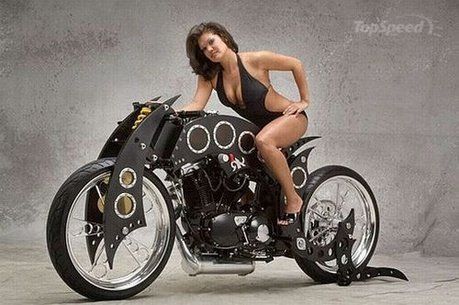.Jawa is a motorcycle manufacturer in the Czech republic, formerly Czechoslovakia. It was named after its founder Janeček bought the motorcycle production of Wanderer in 1929, by concatenating the first letters of Janeček and Wanderer. The company is still active today.
First model
The first model was introduced on October 23, 1929. This was a 500 cc 4-cycle engine with 12 kW of power (18 hp) and fuel consumption of 6 liters per 100 km. Although priced highly, through the first years (and several constructional fixes) this motorcycle was successful and was considered reliable.
Second model
Due to the economic recession of the early 1930 a cheaper and simpler motorcycle was needed. Year 1932 marked the introduction of Jawa 175, with its 3.6 kW engine. This light (70 kg) machine was capable of speeds up to 80 km/h and fuel consumption of 3.5 liters per 100 km. The first year of production was an immediate success, selling over 3000 of the Jawa 175, almost three times the number of the 500 cc model over three years of production. The production of this model was finally stopped 1946. In 1938 Jawa was the first to offer test rides during exhibition show. This test motorcycle was a custom Jawa 175 equipped with dual handlebars, second pair being in the back for the instructor. Over the years total of 27,535 units of the Jawa 175 were built.
 Česká Zbrojovka
Česká Zbrojovka is a Czech firearms manufacturer also known for making ČZ motorcycles. ČZ was established as a branch of the Škoda Works Armament in Strakonice, Czechoslovakia in September 1919.
Work started on the construction of the first workshops of the arms factory originally called "South Bohemian Armament Works" ("Jihočeská zbrojovka"). The company merged with an arms manufacturing plant in Vejprty and with a factory in Prague in 1922. This gave rise to the formation of a stock company whose name translates as "Czech Armament Works in Prague of the Manufacturing Plant in Strakonice". It produced pistols, air guns, and automatic guns which all became successful products.
In 1929 the growth of the Czech Armament Works reached a turning point. With the downturn in weapons sales after World War I, the company acquired a bicycle parts manufacturing plant in Kralupy nad Vltavou on the Vltava River. Bicycle exports destined for several countries in Europe, Asia, Africa and South America started to expand. Production of motor-driven bicycles started in 1932. Three years later the first motorcycles made in Strakonice entered the market. This marked the beginning of an era of great success for the ČZ brand. In a short time the company became the biggest manufacturer of motorcycles in Czechoslovakia. Consequently, business success resulted in a further extension of production activities by introducing chain and machine tool production. During the Second World War the factory came under German occupation and was converted to the manufacture of war materials.
 Eso
Eso was a Czech motorcycle factory producing only racing machines from 1949 until 1964, when it joined Jawa. ESO was founded by a motorcycle racing driver, and made bikes in 250, 350, and 500 cc, primarily for speedway, moto-cross and ice racing.Engines were sourced from J.A.P. during the first year, and then an engine of ESO's own after 1950, first copied from J.A.P. and later of their own design.
.





























